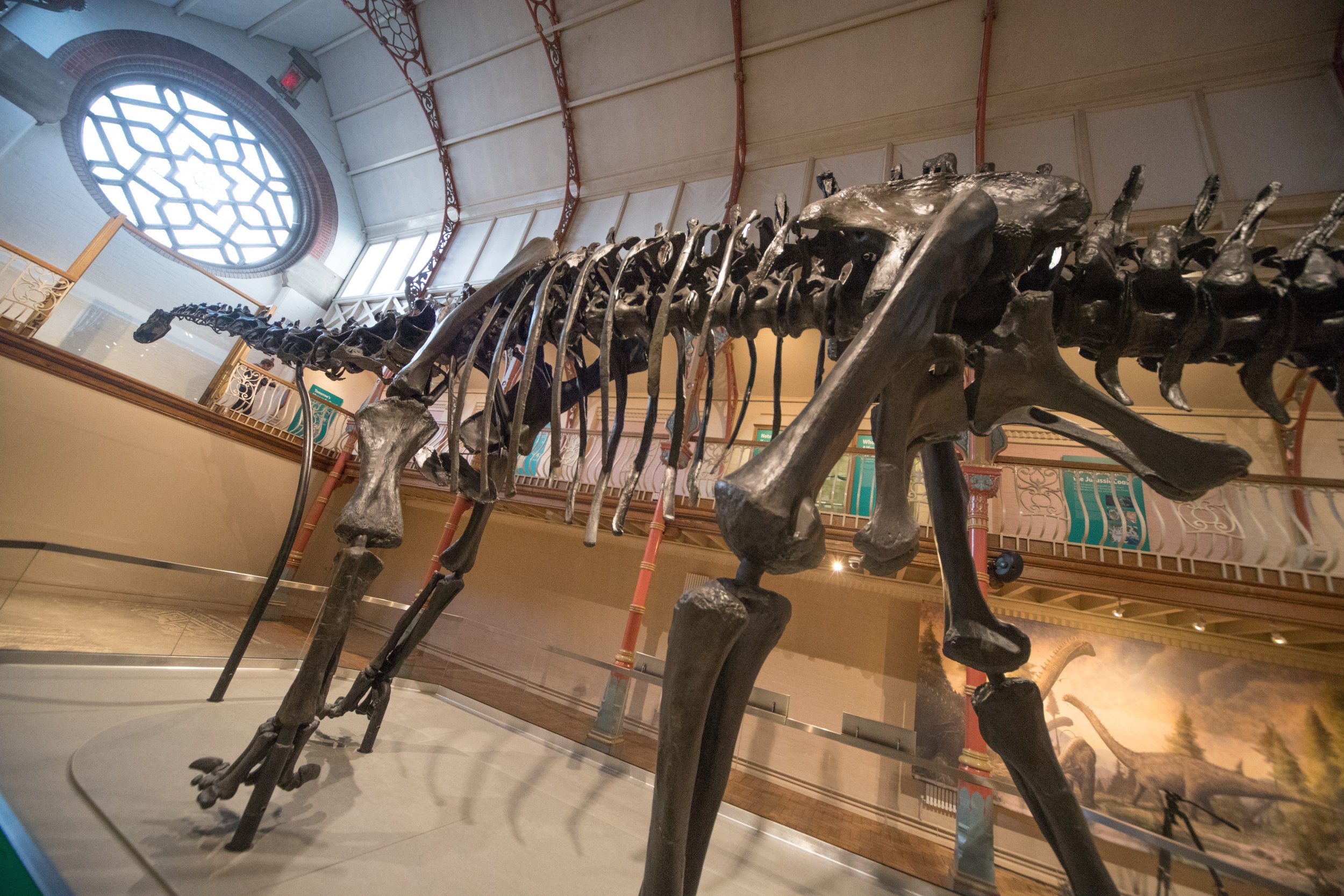
Over 2,000 miles from the Museum of Natural History in New York City, where many of the world's prehistoric fossils reside, a team of scientists found a rare Diplodocus dinosaur skull, the smallest of its kind ever found.
At only 24 centimeters long, the dinosaur skull found in the Upper Jurassic Morrison Formation of Montana is smaller than an iPad, a magazine or a Subway sandwich. A paper, published by Cary Woodruff, Thomas Carr, Glenn Storrs, Katja Waskow, John Scannella, Kara Norden and John Wilson, said the newest discovery enhances features that were already known about the sauropods dinosaur.
The dinosaur is believed to have had a short snout, narrow-crowned teeth in the front of its mouth and broader teeth in the back. A diplodocus is a sauropod, which Britannica explained were characterized by their large size, long necks and tails, four legs and a herbivorous diet. If you've ever seen the "Land Before Time," picture Little Foot and that's a sauropod.
In the paper, the scientists explained that cranial remains of the Diplodocus species are "exceedingly rare" and before the discovery of this skull, only three immature skulls had been found.
CMC VP14128 was the formal identification given to the skull, although he's since been nicknamed by scientists Andrew after Andrew Carnegie. The skull may be small but it's mighty and provided scientists with a vital look into the anatomy of young Diplodocus dinosaurs, showing they weren't simply "smaller versions of adults."
Unlike mature Diplodocus that had wide and squared snouts, CMC VP14128 had a narrow snout. CMC VP14128 also had broad teeth and an extended tooth row, indicating that immature dinosaurs ate a wider variety of plants and processed them differently than adults.
Along with different eating habits, which isn't entirely different than human adults and human children, it's possible Diplodocus dinosaurs lived in groups segregated by age. Whereas adults likely browsed in open habitats, immature dinosaurs may have lived in the forest to give them the best chance of survival.
"Foraging in forests would have provided the juveniles with protective cover from predators, a danger that colossal adults would not share," the paper stated.
The skull was about 40 percent the length of the largest Diplodocus skull that's been found, further proving that the body sizes of these dinosaurs changed as they grew. Using a predetermined ratio of cranial size to body length, scientists predicted Andrew, aged between two and six years old, had a body that was at maximum nine meters long.
"You consider that you start your life coming out an egg the size of a cantaloupe. And when you die, you're a hundred feet long. That's quite a number of growth spurts you have to go through," Woodruff told CBC News.
The skull was discovered in 2010 in the Mother's Day Quarry, where remains of at least 16 small Diplodocines have been found. Diplodocus remains were first found in the late 1800s and over a hundred specimens have been discovered since, including eight skulls. However, CMC VP14128 is the only complete skull to have been found at the Mother's Day Quarry site.
Woodruff acknowledged in an email to National Geographic that it's possible Andrew isn't a Diplodocus and could be an unknown species. At the current moment, the skull is being 3-D scanned for future research.
Uncommon Knowledge
Newsweek is committed to challenging conventional wisdom and finding connections in the search for common ground.
Newsweek is committed to challenging conventional wisdom and finding connections in the search for common ground.
About the writer
Jenni Fink is a senior editor at Newsweek, based in New York. She leads the National News team, reporting on ... Read more
To read how Newsweek uses AI as a newsroom tool, Click here.








